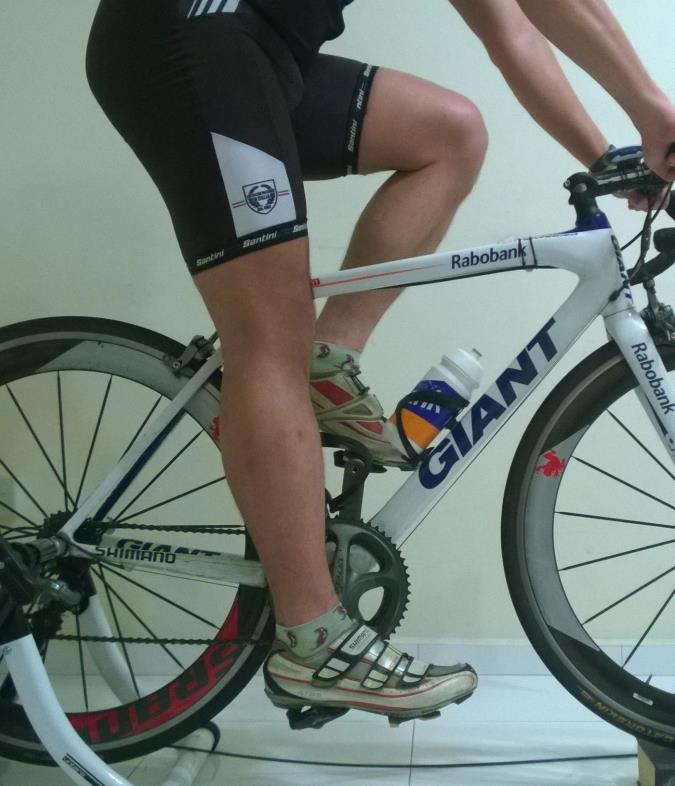How to Adjust My Bicycle Saddle Height Correctly?
Determine your saddle height using the heel to pedal method
By: Raymond Tiangco
Setting your bicycle saddle at the wrong height can have catastrophic consequences. While the immediate effect is the negative impact on pedaling efficiency, riding with the wrong saddle height over a prolonged period can lead to injuries.
Most beginner cyclists would set the saddle height wrongly on their brand new bicycle. This is because our feet will not touch the ground while seated at the correct saddle height, something which most beginners are not used to. Moreover, most of us would have our feet touching the ground while seated on the bicycle to balance ourselves when we first learned how to ride. However, we must understand that proximity of our feet to the ground is not a factor to consider when it comes to setting the correct saddle height.
What if my saddle is too high or too low?
If your saddle is too low, you might end up with patellar tendonitis, also known as jumper’s knee. This is a common pain experienced by beginner cyclists due to over compression of the knee which then results to anterior knee pain. Avoid this by raising your saddle.
On the other hand, you might get biceps femoris tendonitis, which is an inflammation or irritation of the biceps femoris tendon, if your saddle is too high. This causes posterior knee pain due to over extension at the bottom of the pedal stroke.
So How Do We Set Saddle Height?
Every bike provides 3 contact points to rider. The handlebars, the saddle, and the pedals. The seatpost holds the saddle, dictating saddle distance and fore-aft position over the pedals. Seatpost settings directly impact 2 main contact points – your saddle, and your pedals. Adjusting the seatpost either increase or decrease saddle height. Getting your saddle height right put you in a position that optimally delivers power to the pedals and reduces chances for injury. Getting your saddle height wrong provides a variety of injuries to choose from depending on whether you have set it up too high or too low.
The Heel Method
There are many ways to determine saddle height, and most will arrive at different, but close, measurements. The simplest way to set saddle height is by the “Heel Method”. Unlike other methods, the Heel Method does not require any inseam measurements, nor does it require a goniometer to measure knee flexion. Nevertheless, this method has proven itself to be effective amongst a good number of mountain bikers and road cyclists, particularly back in the day when professional bike fitting services were unheard of.
So how is this done? Simple! With your feet bare, keep your pedal at bottom dead centre. However, remain contact with your heel rather than towards your forefoot. This method may also be done with shoes. This method may also be done with shoes on if your pedal systems is not designed to keep your foot as close to the pedal as possible (i.e. Shimano SPD-SL, Look etc). Your saddle is too high if your heel barely touches your pedal when your leg is fully extended. On the other hand, your saddle is too low if you are unable to fully extend your leg although your feet may be in contact with the pedal.
Once your saddle height is dialed in using this method, you will not need to worry about injuring your knees during your first rides on your new bike.
The Lemond Method
This second method was popularized by Tour de France champion, Greg Lemond. The process is quite simple. First, measure your inseam by jamming a thick book between your legs as if it were a saddle. With your heels flat on the floor, and your stance straight, mark a line along the top of the book edge that is touching the wall. Measure this line to the floor for your inseam length. Finally, multiply this number by 88.3% to obtain the exact distance from the centre of the bottom bracket to the top of your saddle. Bear in mind that you must use the correct crank length for this method to work! Most cyclists would be using 172.5 crank arms.
Enjoy the sport, and ride safe!
To receive the latest updates on the happenings in the Singapore sports scene, or to find out more about some of the latest programmes on offer at ActiveSG, like our Facebook page here.



